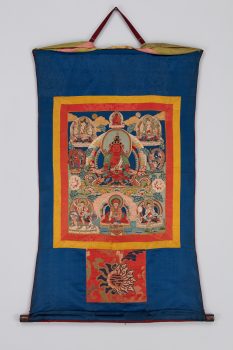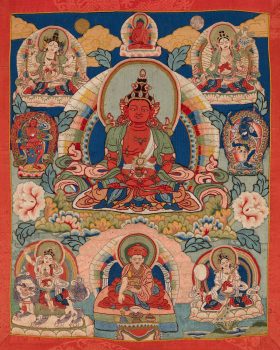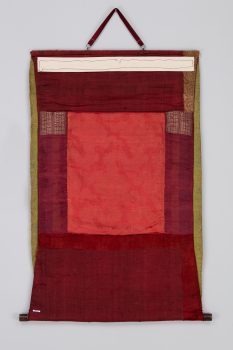Bhutan
late 19th or early 20th century



Bhutan
late 19th or early 20th century



A virtuous feeling and deep respect toward an authentic teaching, teacher, or path. Buddhists believe that expansive study, analysis, and meditation are essential steps for cultivating a healthy and enduring devotion.
In Buddhism merit is accumulated through engaging in positive actions that lead to positive results, such as better rebirths. Buddhists gain merit by making offerings, donating to those in need, reciting mantras, and other good deeds.
The central goal of Buddhism is the liberation of all beings from suffering and the cycle of life, death, and rebirth, known as samsara, through applying the teachings of the Buddha.
An awakened being who understands the true nature of reality and is free from the cycle of birth, death, and rebirth. While there are many buddhas, Siddhartha Gautama is the historical Buddha, whose teachings became the foundation of Buddhism.
Bhutan’s earliest Buddhist temples were built in the 7th century, around the same time Buddhism was introduced in Tibet. In the 17th century, Mongol-backed Geluk authorities drove many Kagyu teachers from Tibet to Bhutanese areas. The Drukpa Kagyu teacher Zhabdrung Ngawang Namgyel (1594–1651) unified these regions and established a system of government.
Get the latest news and stories from the Rubin, plus occasional information on how to support our work.